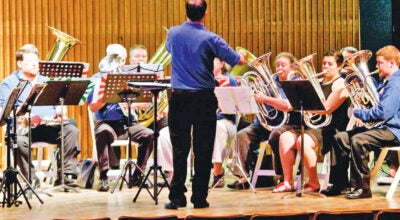More on the make-up of a breed
Published 10:07 pm Saturday, November 7, 2009
In my last article I discussed the importance of studying a breed’s history and make-up before adding the dog to your pack or family.
As I said last week, the American Kennel Club (AKC) has established seven canine breed groups for purebred dogs. In my last article I gave a brief description of the sporting, working, herding, and terrier breed groups.
In this article I will discuss the remaining three: the non-sporting, hound, and toy breed groups.
First, let’s discuss the non-sporting breed group. The non-sporting breed group consists of breeds like the Bulldog, Poodle, Bichon Frise, Llasa Apso, and Boston Terrier.
The non-sporting group is a very diverse group and has much less in common than the breeds of some other groups. Some members have characteristics of the working group (Keeshound), some have characteristics of the sporting group (Dalmatian and Poodle), and some were bred specifically to guard (Chow Chow, Chinese Shar- Pei, and Llasa Apso).
Dogs in this group can be difficult to motivate since they were not bred for labor-intensive purposes. On the other hand since they were not bred for working they tend to make more suitable pets.
Their hunt and chase drives are lower than other breed groups making them easier for inexperienced dog owners to handle.
It is important to note that this may not apply to the dogs in this group that were bred to protect, like the Chow Chow, in which obedience is a must, as with any dominant guarding breed.
Second, the popular hound group is another favorite. The hound group is made up of canines like the Bassett hound, Greyhound, Beagle, and Dachshund.
Due to their hunting instincts the hounds can easily be distracted by even the slightest movements. Hounds, like the working breeds, are bred to work independently of humans.
Because of this they have a less desire to please their owners. They easily become bored and have been classified as stubborn. Most of the hounds were bred to hunt by scent, but some, like the Greyhound, were bred to hunt by sight.
Next, the beloved toy breed group. These tiny pups have also been classified as lap dogs. Some proud members of this group would include favorites like the Maltese, Pug, Shih Tzu, Pomeranian, and the Italian Greyhound.
Many of these micro dogs do not realize that they are so small and can act like they are ferocious lions. So keep a close watch on these little family members.
It would not be uncommon for a Chihuahua to take on a Doberman Pinscher for a favorite bone. The owners of smaller breeds are usually more tolerant of their pooch’s behavior than owners of larger breeds.
I have to admit that a Chinese Crested barking and growling would not be as threatening as a Rottweiler exhibiting the same behavior.
Let me not forget the ever popular mixed and all-american breeds.
A mixed breed is classified as a canine born from parents who are not the same breed and at least one of the parent’s breed is known. An all-american breed is a dog born from parents whose breeds are unknown. More times than not, these breeds make great pets.
They usually have the best of both worlds, good personality and a low occurrence of health problems.
Whether it be a Irish Setter, Great Dane, Collie, Cairn Terrier, Bichon Frise, Afghan Hound, Papillon, or a popular doodle mix that sparks your interest- do your homework. Bringing a pet into your home is a lifetime commitment, make sure a breed has the characteristics that match those of your family.
This will lead to a lifetime friendship for both you and your furry friend. Remember, every dog deserves to be treated like a show dog.
Tony Barker, The BARKer Shop




